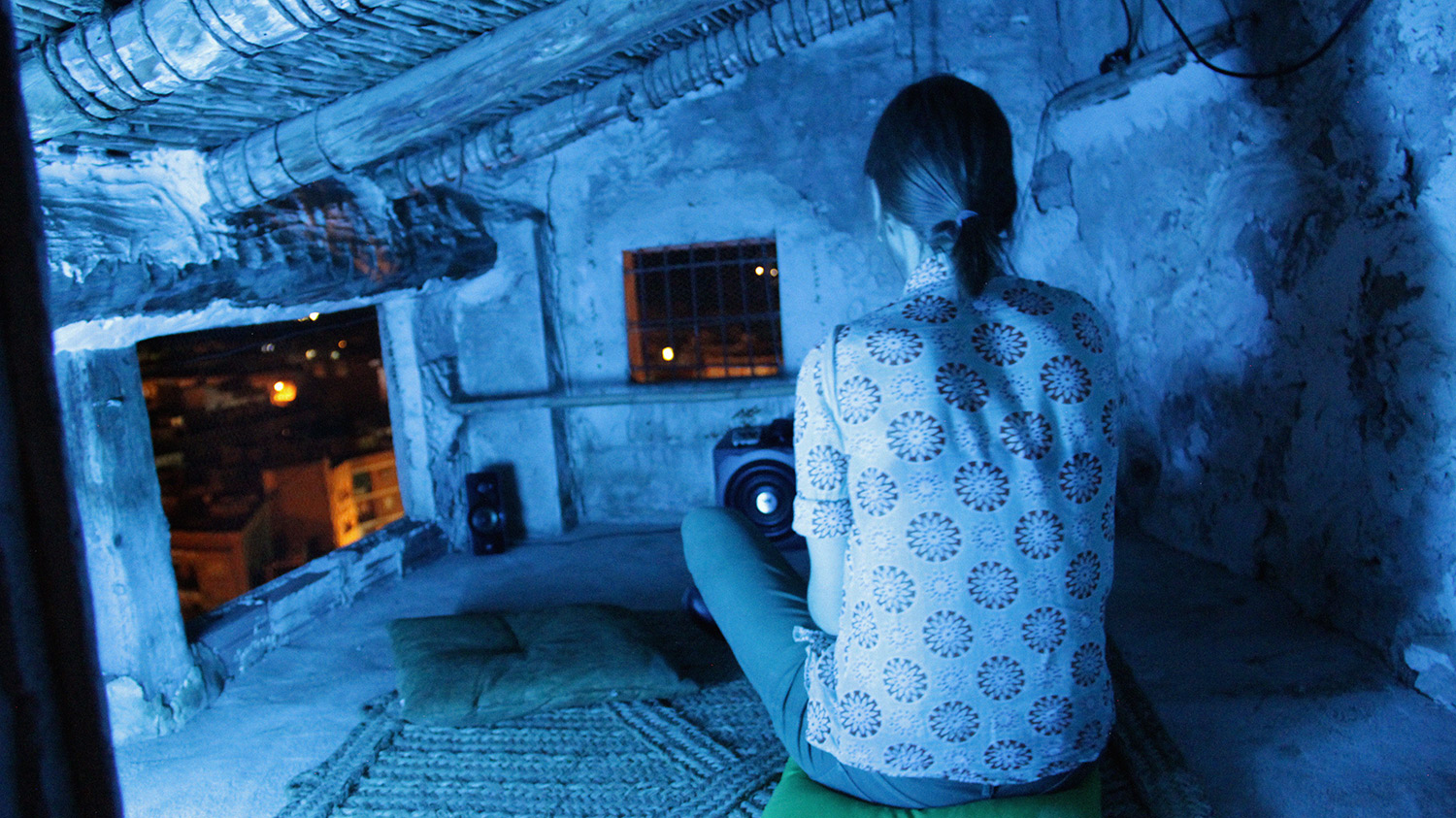
08 Apr Rebecca Gill
Residence period: July-August 2019
Sitio web
July 2019
At a point of juncture in the work, we enter Rebecca’s site to a museological excavation, of ideas, systems, artifacts, technologies, poetry.
The burgeoning work, presented for the open studios in three bodies, constructs a socio-historical investigation into the agricultural, technological and labour economies of Blanca, and the wider region of Murcia.
The first part is viewing platform of excavated ceramic fragments, seen as though they are suspended in time and space, somewhere between archaeological dig and museum display. The second part imagines the object the fragments may have come from in visualisation software, constructing a narrative that leads us from fragments, to pot, to water systems, to agriculture. The film is only a preview into a larger work currently underway. Rebecca works in collaboration with a machine learning algorithm called ‘GPT-2’ which she has given the alias ‘Stesichoros’ after the great ancient Himeran writer. Stesichoros has been trained on datasets that allow it to generate new text in conversation with the artist, around the themes the work is concerned with.
Through this joint learning process, Stesichoros teaches the viewer it’s own perspective on the pot, its mythology, and the technology of agriculture, in turn teaching us about the potential of Artificial Intelligence and hybrid intersections between the archaic and the post-human as sites of immense possibility and imagination. The third piece is a postcard that invites you to save the date for the release of Stesichoros’ (enabled by the artist) inaugural poetry collection. The advert features a preview of some of Stesichoros’ poetry.
August 2019
The work presented for the open studios constructs a socio-historical investigation into the agricultural, technological and labour economies of Blanca, and the wider region of Murcia in dialogue with Artificial Intelligence.
Rebecca works in collaboration with a machine learning algorithm called GPT-2, which she has given the alias ‘Stesichoros’ after the great ancient Himeran writer. Stesichoros has been trained on datasets that allow it to generate new text in conversation with the artist around the themes she is concerned with.
In the form of an immersive experience, the audience can roam around Casa Jazmin capturing their own impressions of those released by the artist in a rhizomatic way.
The whole building has turned into a collage that emphasises the idea of fragmented knowledge and the memory of an experience.
In one of the spaces, one can find a viewing platform of excavated ceramic fragments, seen as though they are suspended in time and space, somewhere between archaeological dig and museum display.
There are also several film projections with non linear narratives composed by virtual representations mixed with her own video footage. Made with the same material, the paths of the montage take different directions in each of them, creating a multichannel video installation spread in space. In the videos, Rebecca attempts to treat the editing process as a continuation of the raw material, expanding and collapsing the screen space with a sense of tactility, as though it too were a landscape.
A poem written by Stesichoros feeds into the sound of the space, which acts as a river between the video islands, holding and filling the space between them and offering another layer to the experience.











